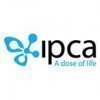Filter interviews by
DIVI'S Laboratories Trainee Interview Questions and Answers
DIVI'S Laboratories Trainee Interview Experiences
1 interview found
I applied via Referral and was interviewed before Aug 2020. There was 1 interview round.
Interview Questionnaire
1 Question
- Q1. What is full form HPLC
- Ans.
HPLC stands for High Performance Liquid Chromatography.
HPLC is a technique used to separate, identify, and quantify components in a mixture.
It involves the use of a liquid mobile phase and a stationary phase.
The mobile phase carries the sample through the stationary phase, where separation occurs based on different interactions.
HPLC is widely used in pharmaceutical, environmental, and forensic analysis.
It is used to an...
Interview Preparation Tips
Top trending discussions






Interview questions from similar companies

I applied via Approached by Company and was interviewed before Jun 2021. There were 2 interview rounds.

(1 Question)
- Q1. How many years you stay in this organisation?
- Ans. This organisation is really good, if I thought I will continues upto retirement.
Interview Preparation Tips

Interview Questionnaire
4 Questions
- Q1. Tell me about your family background?
- Q2. Why you interested in our company?
- Q3. Why you did you choose as electrical engineering in your course?
- Q4. Will you do further studies?
Interview Preparation Tips

Interview Questionnaire
2 Questions
- Q1. Why would you like to join this industry
- Q2. It's name is enough to answer

I applied via Recruitment Consulltant and was interviewed before Sep 2021. There was 1 interview round.
(1 Question)
- Q1. Why you want to join our organization
Interview Preparation Tips
- Basic pharma

Trainee Interview Questions & Answers
Sun Pharmaceutical Industriesposted on 13 Sep 2017
I appeared for an interview before Sep 2016.
Interview Preparation Tips
Experience: The conclusion :
If you see from one side you will find that there is actually no need for drug price control in India. There are already so many competitive forces that allow the market to sell both premium as well as generic drugs. So even if the doctor prescribes the expensive branded drug, the patient has option to ask for substitute generic drug at pharmacy. But then on the other side, India has got a huge percentage of population that finds it tough to meet the medical costs. And, therefore it becomes responsibility of the government to opt for the drug price control. However, it should be done in a planned way with a proper discussion with the industry so that no one feels the heat.
Tips: Group discussions should include recent events and more talks should be conducted regarding the actual job
Duration: 1 hour
Round: Group Activity
Experience: There debate topic was should community pharmacists should shif their focus away from dispensing and towards NHS service provision or not.If there is to be widespread reform by 2020, community pharmacy requires a revolution rather than evolution. Any revolution in community pharmacy is likely to be precipitated by a massive divestment in prescription dispensing in order to release money to help fund growth of NHS integrated care organisations. With substantial competition from big players and local practices keen to compete for the same work, the incomes of many community pharmacists will shrink rapidly
With the use of new technologies, dispensing in the community could soon replicate the dispensing systems used in hospitals. Indeed, policymakers are pushing for the replication of hospital dispensing arrangements in the community and have been quietly preparing for factory-type dispensing pharmacy outlets. So the conclusiom was pharmacist should shift their focus to NHS service.

I applied via Campus Placement and was interviewed before Apr 2020. There were 3 interview rounds.
Interview Questionnaire
2 Questions
- Q1. Technical
- Q2. Educational
Interview Preparation Tips

I applied via Campus Placement and was interviewed before Jan 2020. There were 5 interview rounds.
Interview Questionnaire
6 Questions
- Q1. 1) introduce yourself
- Q2. 2) regarding basic chemistry concepts and my college projects
- Q3. 3) Any expectations from us
- Q4. 4) what you like about our organization
- Q5. 5) why we only hired you than others
- Q6. 6) do you have intrest in higher study
Interview Preparation Tips
Advices from my interview experience
1) be opened during interview
2) try to give all correct answers , if in some que you have no idea then politely say them sorry and go ahead
3) don't take stress
4) keep in mind always one thing you starting and end moments of interviews are very important , which indirectly increases your selection chances
Wish you all the very best ☺️

I applied via Referral and was interviewed before Feb 2021. There were 2 interview rounds.
(1 Question)
- Q1. Types of clean rooms?
- Ans.
Clean rooms are classified based on the level of cleanliness required for specific applications.
Clean rooms are classified into different classes based on the maximum allowable number of particles per cubic meter of air.
The classification system is defined by international standards such as ISO 14644-1.
Some common types of clean rooms include ISO Class 1, ISO Class 5, and ISO Class 8.
Clean rooms are used in various ind...
(1 Question)
- Q1. What is your family background?
Interview Preparation Tips

I applied via Walk-in and was interviewed in Apr 2023. There were 2 interview rounds.

(5 Questions)
- Q1. Defination of pH?
- Ans.
pH is a measure of the acidity or alkalinity of a solution on a scale of 0 to 14.
pH stands for 'potential of Hydrogen'
It measures the concentration of hydrogen ions in a solution
A pH of 7 is considered neutral, below 7 is acidic, and above 7 is alkaline
Examples: Lemon juice has a pH of around 2, while baking soda has a pH of around 9
- Q2. Which topic do you like in your subject.
- Q3. Define molarity, molality, normality.
- Ans.
Molarity is the concentration of a solution in moles of solute per liter of solution. Molality is the concentration of a solution in moles of solute per kilogram of solvent. Normality is the concentration of a solution in equivalent weights of solute per liter of solution.
Molarity is expressed as moles of solute per liter of solution (M = moles/L).
Molality is expressed as moles of solute per kilogram of solvent (m = mo...
- Q4. Name the acids, which draws on paper.
- Ans.
Acids that draw on paper include citric acid, acetic acid, and oxalic acid.
Citric acid
Acetic acid
Oxalic acid
- Q5. Principles of Gas chromatography
- Ans.
Gas chromatography is a technique used to separate and analyze compounds in a mixture based on their distribution between a stationary phase and a mobile phase.
Gas chromatography involves a sample being vaporized and injected into a column with a stationary phase, where it interacts with a carrier gas.
Compounds in the sample will travel through the column at different rates based on their interactions with the stationa...
Interview Preparation Tips
Tell us how to improve this page.
DIVI'S Laboratories Interviews By Designations
- DIVI'S Laboratories Production Supervisor Interview Questions
- DIVI'S Laboratories Supervisor Interview Questions
- DIVI'S Laboratories Production Chemist Interview Questions
- DIVI'S Laboratories Chemist Interview Questions
- DIVI'S Laboratories Quality Analyst Interview Questions
- DIVI'S Laboratories Production Interview Questions
- DIVI'S Laboratories Engineering Supervisor Interview Questions
- DIVI'S Laboratories Electrical Engineer Interview Questions
- Show more
Interview Questions for Popular Designations
- Graduate Engineer Trainee (Get) Interview Questions
- Management Trainee Interview Questions
- Engineer Trainee Interview Questions
- Graduate Trainee Interview Questions
- Software Engineer Trainee Interview Questions
- Diploma Trainee Engineer Interview Questions
- Internship Trainee Interview Questions
- Programmer Analyst Trainee Interview Questions
- Show more
DIVI'S Laboratories Trainee Interview Process
based on 1 interview
Interview experience
Trainee Interview Questions from Similar Companies
Fast track your campus placements
DIVI'S Laboratories Trainee Reviews and Ratings
based on 6 reviews
Rating in categories
|
Chemist
757
salaries
| ₹1.1 L/yr - ₹5.5 L/yr |
|
Production Chemist
544
salaries
| ₹1.2 L/yr - ₹5.7 L/yr |
|
Supervisor
494
salaries
| ₹1.2 L/yr - ₹5.7 L/yr |
|
Analyst
366
salaries
| ₹1.7 L/yr - ₹5.7 L/yr |
|
Production Supervisor
336
salaries
| ₹1.7 L/yr - ₹5.5 L/yr |

Cipla

Dr. Reddy's

Lupin

Zydus Lifesciences
- Home >
- Interviews >
- DIVI'S Laboratories Interview Questions >
- DIVI'S Laboratories Trainee Interview Questions













